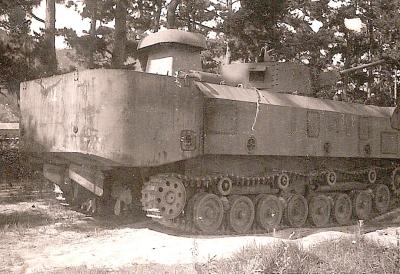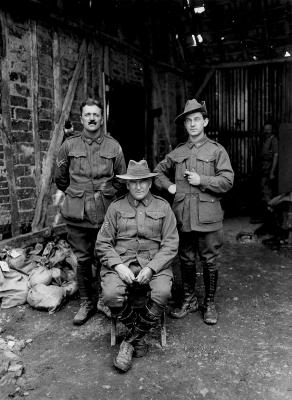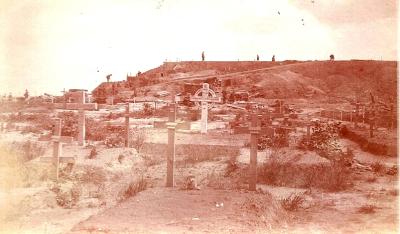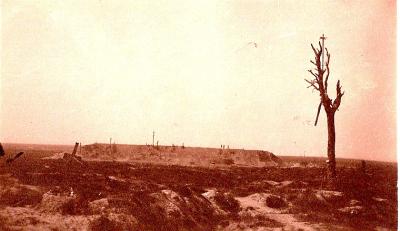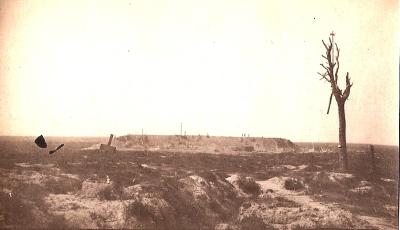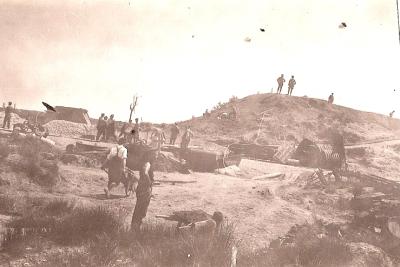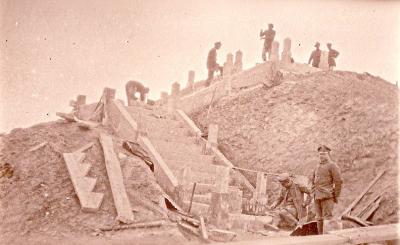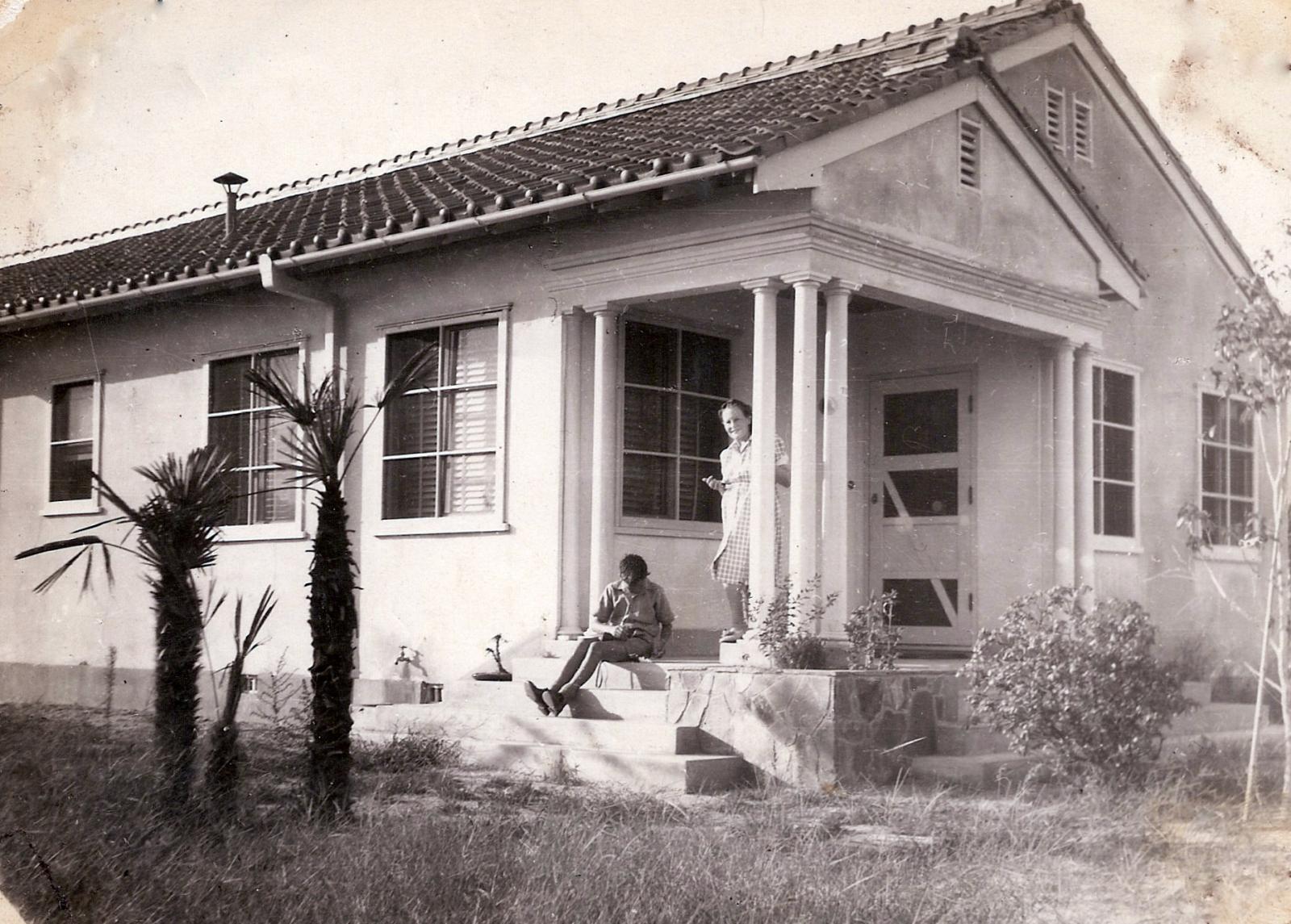Post 1945, Japan, Hiroshima Prefecture, British Commonwealth Occupation Force, Rainbow Village, 1947
1946View of a house in Rainbow Village with woman standing on the porch
On 13 February 1946, Australian troops, the vanguard of a 37,000-strong British Commonwealth Occupation Force (BCOF), disembarked at the war-devastated Japanese port city of Kure, almost four years to the day (15 February 1942) after Singapore, the bastion of the British Empire in the Far East, surrendered to the Japanese Army. At its peak, there were some 12,000 Australians serving in BCOF.
From 1946 to 1952 Australian forces were responsible for the military occupation of Hiroshima Prefecture, site of the first atomic bomb attack in history. During this time the role of the Australian forces changed from that of an “occupying power” to a new role of “protective power”; in 1950 Australian forces in Japan were deployed, under UN command, to operations in Korea.
In December 1946, Cabinet approved the despatch of families of Australian servicemen to Japan when housing and medical facilities became available. The first group of families reached Japan on 1 June 1947.The main family housing area was located on a disused Japanese air strip fronting the Inland Sea at Hiroshima, in the 34th Australian Infantry Brigade area. Here a considerable township grew up with bungalows and two-or four-apartment dwellings. Chapels, a school, shop and cinema were included in the development. Japanese contractors carried out the work and furniture was obtained from Japanese sources. To give variety, different types of houses were interspersed, and the changing shades of pastel colouring of plaster walls and roofs made a cheerful and bright picture. The name given to the area was Japanese for ‘Rainbow Village’. Niji Mura it therefore became and still remains.
The BCOF housing, for some 472 Australian families in a force at that time of 8,200 Australian personnel, was equal to that provided by the US for its families and in the case of the Rainbow Village at Niji Mura, superior. Housing included the provision of furniture and equipment, free servants, and medical, dental, and hospital services. Education was provided by BCOF education officers. Generous though these arrangements appeared to be, compared with conditions in Australia, ambiguities in the promulgation of service conditions had led to the build-up of some grievances following a decision in 1947 to implement a scale of rental charges.
Details
Details
Open in Google Maps
Nearest geotagged records:
Australian Army Museum of Western Australia
Australian Army Museum of Western Australia
Other items from Australian Army Museum of Western Australia
- World War 2, Japan, 1945
- World War 1, Australia Western Australia, 1916
- World War 1, Europe, 1918
- World War 1, Europe, 1918
- World War 1, Europe, HOBBS, 5 Division Memorial, 1919
- World War 1, Europe, HOBBS, 5 Division Memorial, 1919
- World War 1, Europe, HOBBS, 5 Division Memorial, 1919
- World War 1, Europe, HOBBS, 5 Division Memorial, 1919
- World War 1, Europe, HOBBS, 5 Division Memorial, 1919
- World War 1, Europe, HOBBS, 5 Division, 1919
- World War 1, Europe, HOBBS, 5 Division Memorial, 1919
- World War 1, Europe, HOBBS, 5 Division Memorial, 1919
